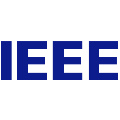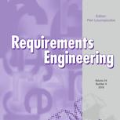Within the field of Requirements Engineering (RE), the increasing significance of Explainable Artificial Intelligence (XAI) in aligning AI-supported systems with user needs, societal expectations, and regulatory standards has garnered recognition. In general, explainability has emerged as an important non-functional requirement that impacts system quality. However, the supposed trade-off between explainability and performance challenges the presumed positive influence of explainability. If meeting the requirement of explainability entails a reduction in system performance, then careful consideration must be given to which of these quality aspects takes precedence and how to compromise between them. In this paper, we critically examine the alleged trade-off. We argue that it is best approached in a nuanced way that incorporates resource availability, domain characteristics, and considerations of risk. By providing a foundation for future research and best practices, this work aims to advance the field of RE for AI.
相關內容

The non-dominated sorting genetic algorithm II (NSGA-II) is the most intensively used multi-objective evolutionary algorithm (MOEA) in real-world applications. However, in contrast to several simple MOEAs analyzed also via mathematical means, no such study exists for the NSGA-II so far. In this work, we show that mathematical runtime analyses are feasible also for the NSGA-II. As particular results, we prove that with a population size four times larger than the size of the Pareto front, the NSGA-II with two classic mutation operators and four different ways to select the parents satisfies the same asymptotic runtime guarantees as the SEMO and GSEMO algorithms on the basic OneMinMax and LeadingOnesTrailingZeros benchmarks. However, if the population size is only equal to the size of the Pareto front, then the NSGA-II cannot efficiently compute the full Pareto front: for an exponential number of iterations, the population will always miss a constant fraction of the Pareto front. Our experiments confirm the above findings.
Nowadays, while the demand for capacity continues to expand, the blossoming of Internet of Everything is bringing in a paradigm shift to new perceptions of communication networks, ushering in a plethora of totally unique services. To provide these services, Virtual Network Functions (VNFs) must be established and reachable by end-users, which will generate and consume massive volumes of data that must be processed locally for service responsiveness and scalability. For this to be realized, a solid cloud-network Integrated infrastructure is a necessity, and since cloud and network domains would be diverse in terms of characteristics but limited in terms of capability, communication and computing resources should be jointly controlled to unleash its full potential. Although several innovative methods have been proposed to allocate the resources, most of them either ignored network resources or relaxed the network as a simple graph, which are not applicable to Beyond 5G because of its dynamism and stringent QoS requirements. This paper fills in the gap by studying the joint problem of communication and computing resource allocation, dubbed CCRA, including VNF placement and assignment, traffic prioritization, and path selection considering capacity constraints as well as link and queuing delays, with the goal of minimizing overall cost. We formulate the problem as a non-linear programming model, and propose two approaches, dubbed B\&B-CCRA and WF-CCRA respectively, based on the Branch \& Bound and Water-Filling algorithms. Numerical simulations show that B\&B-CCRA can solve the problem optimally, whereas WF-CCRA can provide near-optimal solutions in significantly less time.
With the increasing reliance on small Unmanned Aerial Systems (sUAS) for Emergency Response Scenarios, such as Search and Rescue, the integration of computer vision capabilities has become a key factor in mission success. Nevertheless, computer vision performance for detecting humans severely degrades when shifting from ground to aerial views. Several aerial datasets have been created to mitigate this problem, however, none of them has specifically addressed the issue of occlusion, a critical component in Emergency Response Scenarios. Natural Occluded Multi-scale Aerial Dataset (NOMAD) presents a benchmark for human detection under occluded aerial views, with five different aerial distances and rich imagery variance. NOMAD is composed of 100 different Actors, all performing sequences of walking, laying and hiding. It includes 42,825 frames, extracted from 5.4k resolution videos, and manually annotated with a bounding box and a label describing 10 different visibility levels, categorized according to the percentage of the human body visible inside the bounding box. This allows computer vision models to be evaluated on their detection performance across different ranges of occlusion. NOMAD is designed to improve the effectiveness of aerial search and rescue and to enhance collaboration between sUAS and humans, by providing a new benchmark dataset for human detection under occluded aerial views.
Recommender systems (RS) have achieved significant success by leveraging explicit identification (ID) features. However, the full potential of content features, especially the pure image pixel features, remains relatively unexplored. The limited availability of large, diverse, and content-driven image recommendation datasets has hindered the use of raw images as item representations. In this regard, we present PixelRec, a massive image-centric recommendation dataset that includes approximately 200 million user-image interactions, 30 million users, and 400,000 high-quality cover images. By providing direct access to raw image pixels, PixelRec enables recommendation models to learn item representation directly from them. To demonstrate its utility, we begin by presenting the results of several classical pure ID-based baseline models, termed IDNet, trained on PixelRec. Then, to show the effectiveness of the dataset's image features, we substitute the itemID embeddings (from IDNet) with a powerful vision encoder that represents items using their raw image pixels. This new model is dubbed PixelNet.Our findings indicate that even in standard, non-cold start recommendation settings where IDNet is recognized as highly effective, PixelNet can already perform equally well or even better than IDNet. Moreover, PixelNet has several other notable advantages over IDNet, such as being more effective in cold-start and cross-domain recommendation scenarios. These results underscore the importance of visual features in PixelRec. We believe that PixelRec can serve as a critical resource and testing ground for research on recommendation models that emphasize image pixel content. The dataset, code, and leaderboard will be available at //github.com/westlake-repl/PixelRec.
Despite their impressive performance in a wide range of NLP tasks, Large Language Models (LLMs) have been reported to encode worrying-levels of gender bias. Prior work has proposed debiasing methods that require human labelled examples, data augmentation and fine-tuning of the LLMs, which are computationally costly. Moreover, one might not even have access to the internal parameters for performing debiasing such as in the case of commercially available LLMs such as GPT-4. To address this challenge we propose bias suppression, a novel alternative to debiasing that does not require access to model parameters. We show that text-based preambles, generated from manually designed templates covering counterfactual statements, can accurately suppress gender biases in LLMs. Moreover, we find that descriptive sentences for occupations can further suppress gender biases. Interestingly, we find that bias suppression has a minimal adverse effect on downstream task performance, while effectively mitigating the gender biases.
Large Language Models (LLMs) have emerged as powerful tools in the field of Natural Language Processing (NLP) and have recently gained significant attention in the domain of Recommendation Systems (RS). These models, trained on massive amounts of data using self-supervised learning, have demonstrated remarkable success in learning universal representations and have the potential to enhance various aspects of recommendation systems by some effective transfer techniques such as fine-tuning and prompt tuning, and so on. The crucial aspect of harnessing the power of language models in enhancing recommendation quality is the utilization of their high-quality representations of textual features and their extensive coverage of external knowledge to establish correlations between items and users. To provide a comprehensive understanding of the existing LLM-based recommendation systems, this survey presents a taxonomy that categorizes these models into two major paradigms, respectively Discriminative LLM for Recommendation (DLLM4Rec) and Generative LLM for Recommendation (GLLM4Rec), with the latter being systematically sorted out for the first time. Furthermore, we systematically review and analyze existing LLM-based recommendation systems within each paradigm, providing insights into their methodologies, techniques, and performance. Additionally, we identify key challenges and several valuable findings to provide researchers and practitioners with inspiration.
Graph Neural Networks (GNNs) have recently become increasingly popular due to their ability to learn complex systems of relations or interactions arising in a broad spectrum of problems ranging from biology and particle physics to social networks and recommendation systems. Despite the plethora of different models for deep learning on graphs, few approaches have been proposed thus far for dealing with graphs that present some sort of dynamic nature (e.g. evolving features or connectivity over time). In this paper, we present Temporal Graph Networks (TGNs), a generic, efficient framework for deep learning on dynamic graphs represented as sequences of timed events. Thanks to a novel combination of memory modules and graph-based operators, TGNs are able to significantly outperform previous approaches being at the same time more computationally efficient. We furthermore show that several previous models for learning on dynamic graphs can be cast as specific instances of our framework. We perform a detailed ablation study of different components of our framework and devise the best configuration that achieves state-of-the-art performance on several transductive and inductive prediction tasks for dynamic graphs.
Generative Adversarial Nets (GAN) have received considerable attention since the 2014 groundbreaking work by Goodfellow et al. Such attention has led to an explosion in new ideas, techniques and applications of GANs. To better understand GANs we need to understand the mathematical foundation behind them. This paper attempts to provide an overview of GANs from a mathematical point of view. Many students in mathematics may find the papers on GANs more difficulty to fully understand because most of them are written from computer science and engineer point of view. The aim of this paper is to give more mathematically oriented students an introduction to GANs in a language that is more familiar to them.

Interest in the field of Explainable Artificial Intelligence has been growing for decades and has accelerated recently. As Artificial Intelligence models have become more complex, and often more opaque, with the incorporation of complex machine learning techniques, explainability has become more critical. Recently, researchers have been investigating and tackling explainability with a user-centric focus, looking for explanations to consider trustworthiness, comprehensibility, explicit provenance, and context-awareness. In this chapter, we leverage our survey of explanation literature in Artificial Intelligence and closely related fields and use these past efforts to generate a set of explanation types that we feel reflect the expanded needs of explanation for today's artificial intelligence applications. We define each type and provide an example question that would motivate the need for this style of explanation. We believe this set of explanation types will help future system designers in their generation and prioritization of requirements and further help generate explanations that are better aligned to users' and situational needs.

The problem of Multiple Object Tracking (MOT) consists in following the trajectory of different objects in a sequence, usually a video. In recent years, with the rise of Deep Learning, the algorithms that provide a solution to this problem have benefited from the representational power of deep models. This paper provides a comprehensive survey on works that employ Deep Learning models to solve the task of MOT on single-camera videos. Four main steps in MOT algorithms are identified, and an in-depth review of how Deep Learning was employed in each one of these stages is presented. A complete experimental comparison of the presented works on the three MOTChallenge datasets is also provided, identifying a number of similarities among the top-performing methods and presenting some possible future research directions.


